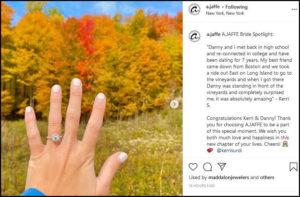The times and changing attitudes are redefining the meaning of luxury.
Luxury brands spent decades turning design, aspiration and high-quality goods into a $380 billion global behemoth. The coronavirus pandemic changed all of that in a few short months, accelerating shifts in consumption and consumer preferences, particularly a fundamental shift in what “luxury” means, as consumers become more environmentally and socially aware, and digital channels become more important as sources of inspiration and sales, reports the Boston Consulting Group (BCG) in a recent white paper.
The times and changing attitudes are redefining the meaning of luxury, forcing brands to rethink every aspect of their business. BCG research sees the key imperatives for businesses to thrive in the future embracing sustainability, diversity and inclusion, digital capabilities, and integrating people and technology.
Although consumers are spending less on luxury goods during and immediately after lockdown periods, BCG finds brands whose products are perceived to be timeless have not and will not be affected as much as those that are more dependent on fashion trends and fads. Moreover, categories that are further along in incorporating digital platforms and technologies into sales and distribution channels should fare better.
BCG acknowledged the challenges that vendors selling jewelry and watches face on average because of their continued reliance on sales through physical channels. The report cites e-commerce accounting for only 10 percent of watch and 5 percent of jewelry sales, at a time that online channels are blossoming.
But the consultancy group expects companies that streamline operations, redefine luxury to be less conspicuous and more inclusive, and invest in new ways of doing business are more likely to not just power through these uncertain times, but emerge stronger for the future.
Invest in Digital
BCG expects online shopping behaviors to continue to include not only transactions, but also the inspiration stage of the purchase journey, which now accounts for a large portion of consumers’ online shopping-related activity. Gen Z shoppers in particular devote half of the time they spend making a purchase either seeking inspiration or inspiring others.
If consumers are spending more time in the inspiration phase of the path to purchase, then brands need to be there as well, including on social channels such as Instagram and WeChat, BCG advocates. To win over luxury buyers, brands must invest in boosting their visibility in these channels, offering amenities like virtual try-on and giving customers a more personalized experience.
Consumers today, especially Millennials and Gen Z, reach for their smart phones and computers to discover new products and learn more in depth about almost anything, concurs Jiji Lee in a recent podcast for The Plumb Club. The marketing director for Jewelmark, a Plumb Club member manufacturer, encourages jewelers to strongly invest in building brand awareness in the digital space where people spend most of their time.
To maximize brand awareness, Lee advocates jewelers invest in at least five of the seven top digital marketing strategies of reaching consumers — mobile ads, SEO, SEM, email marketing, website design and display ads. She considers display ads and social media two musts of the five.
Display ads, Lee says, generate valuable leads and traffic for high value engagement when consumers react to the ads. And, social media is the only platform that provides an ongoing dialogue and interaction with brand followers, shares emotional connection touch points, and the most effective space to offer real-time experiences, earn loyalty, and sustain the engagement.
Personalized Messaging
Lee advocates brand messaging that captures both inspirational audiences and aspirational audiences — directing the right message to the right audience at the right time. She cites Tiffany as an example of a brand that does this well.
“Tiffany’s average ticket price for its sterling silver line is $100,” Lee says. “But as they position themselves in the high-ticket luxury category, their overall brand perception is of a high-end fine jewelry brand every woman wants. This is all things to their perfect balance of positioning products, starting at lower price points, that connect to a mix of inspirational and aspirational marketing concepts. Look at your brand and know how your product is positioned.”
Working on the campaigns for Jewelmark’s branded lines, Enchanted Disney Fine Jewelry and Hallmark Fine Jewelry, Lee encourages jewelers to develop content that is personalized, targeted and authentic. “Today’s marketing is all about consumers and our lifestyle. As there are more brands concentrated online, and easily accessible with the click of a button, customers are moving away from meaningless product options, and gravitating toward meaningful product offerings that add value to their life, personally and emotionally.”
Citing Jewelmark’s approach for its Hallmark fine jewelry line, branded content is centered around five sentiments: love, family, blessings, inspiration, and luck, with stories connected to the product assortment.
Lee underscores how essential it is for jewelers to stay active, engaged and relevant with the most up-to-date information online, or risk customers dismissing their brand. “Engagement marketing builds advocates for your brand, and social media is the key to maximize awareness.”


